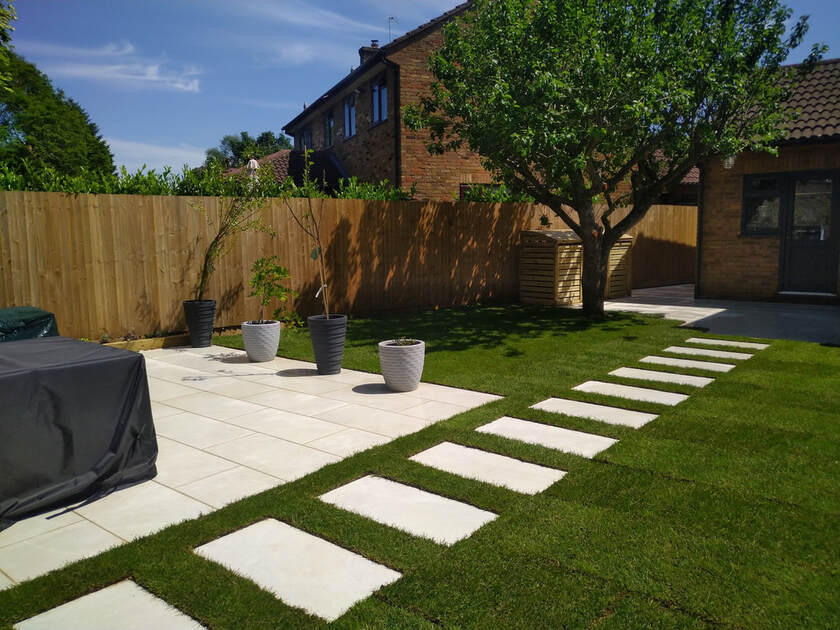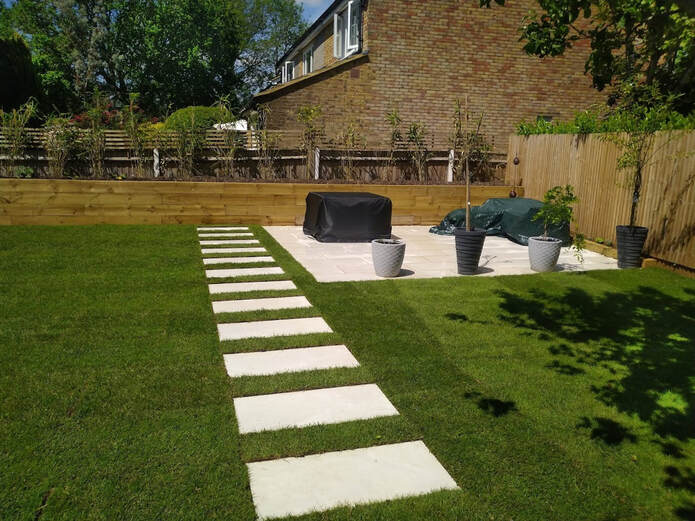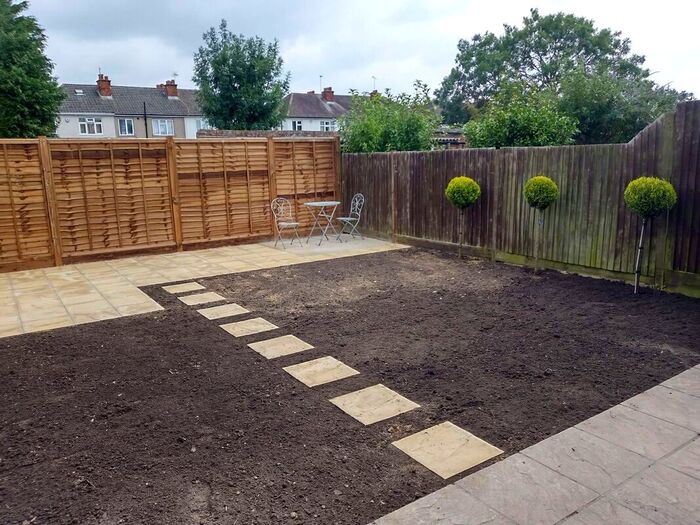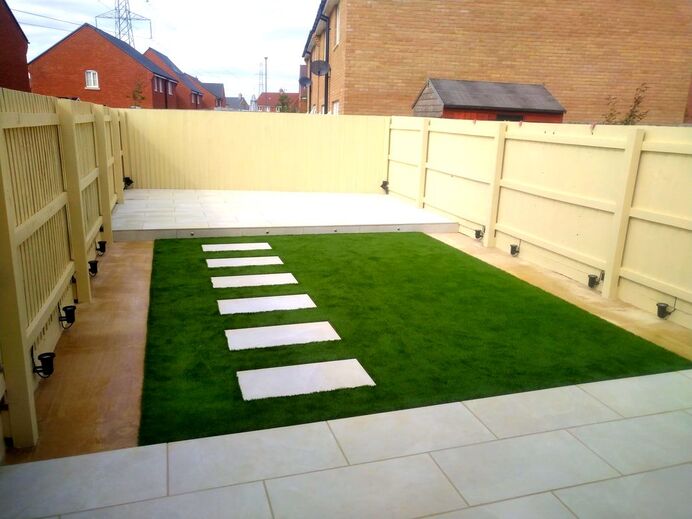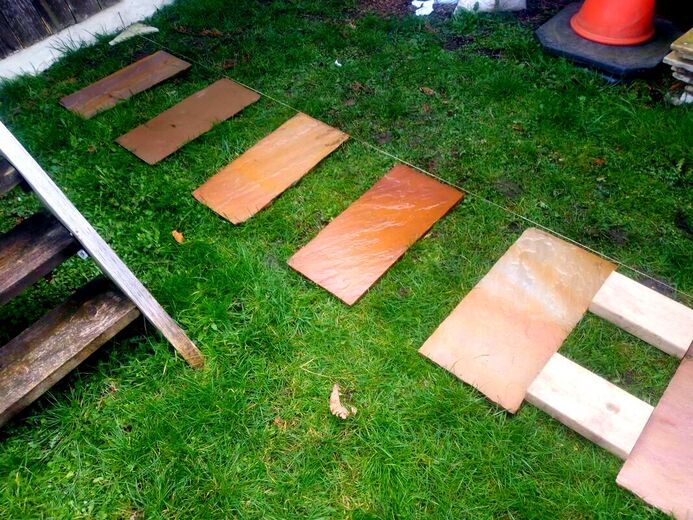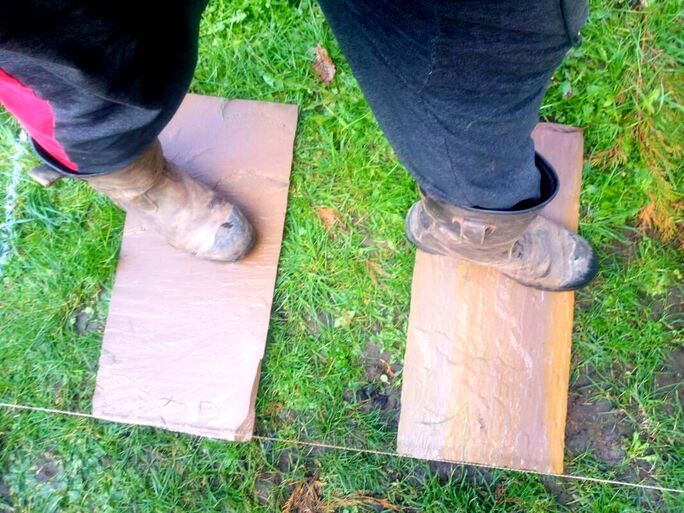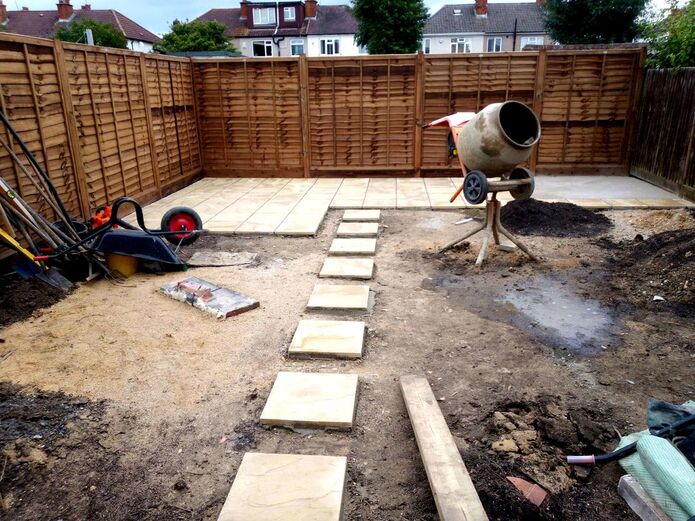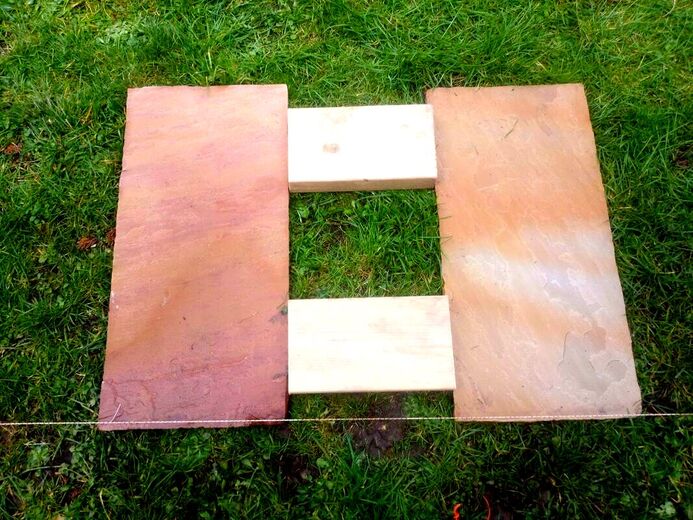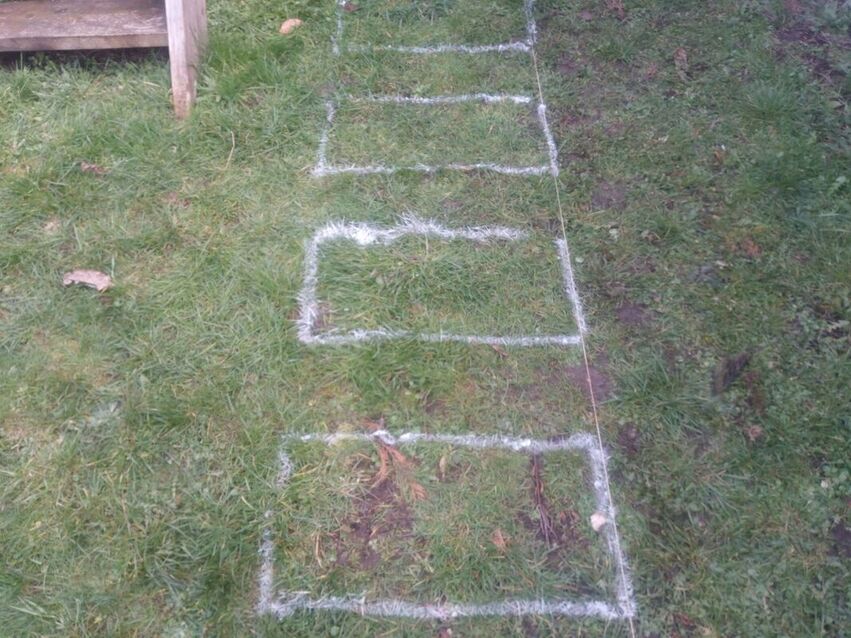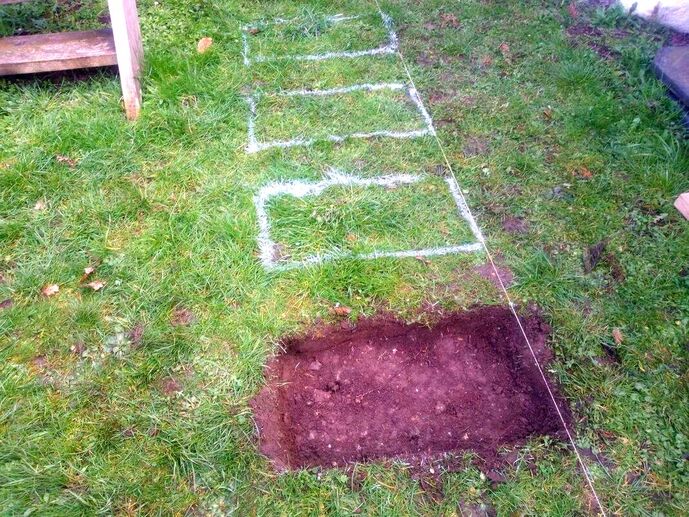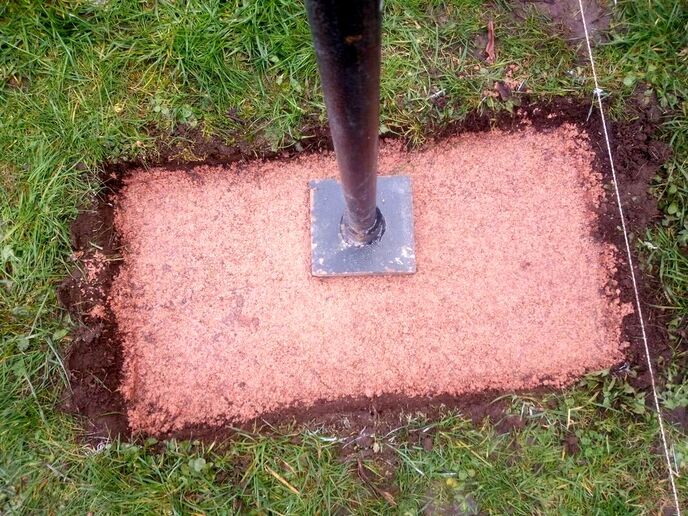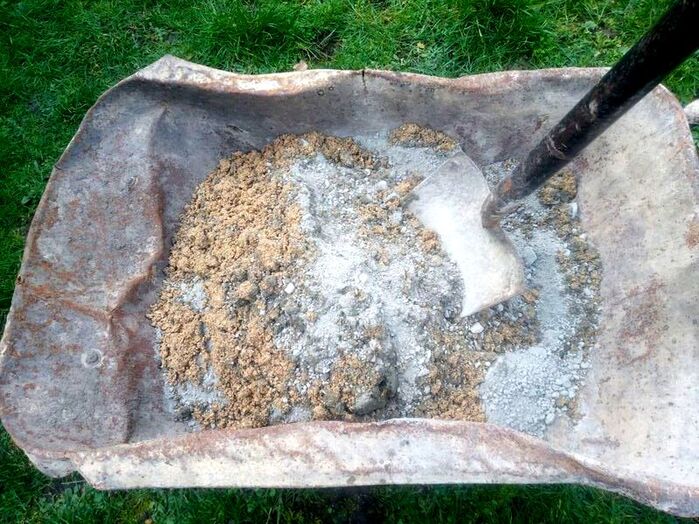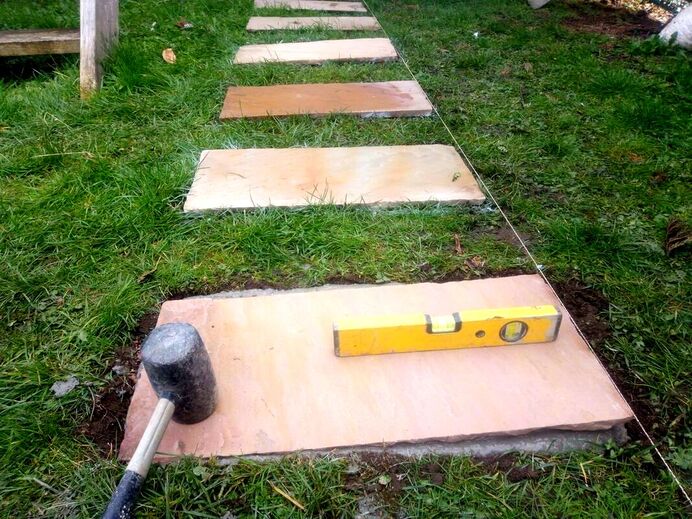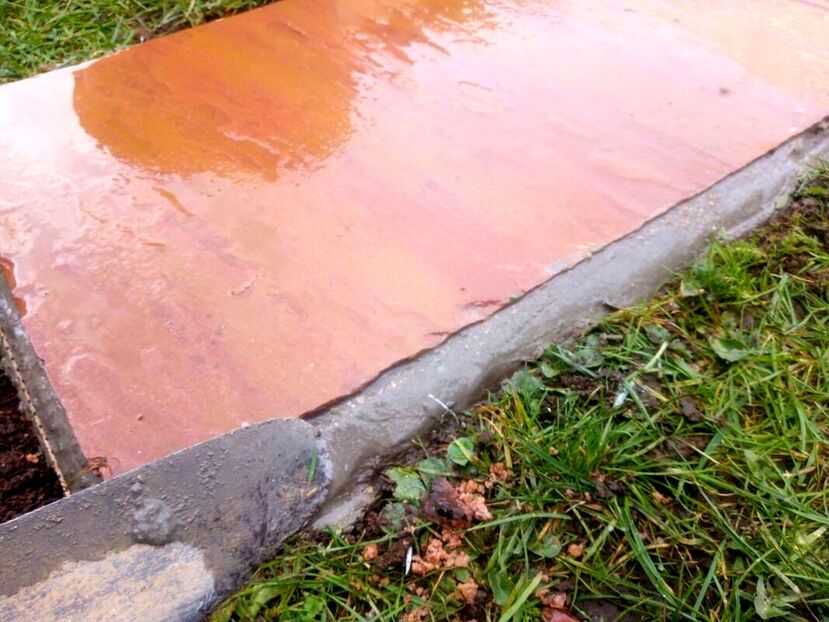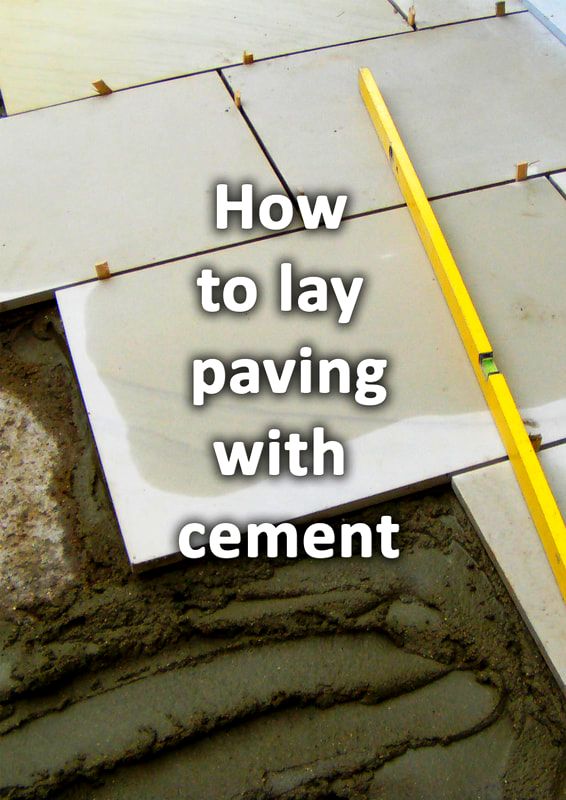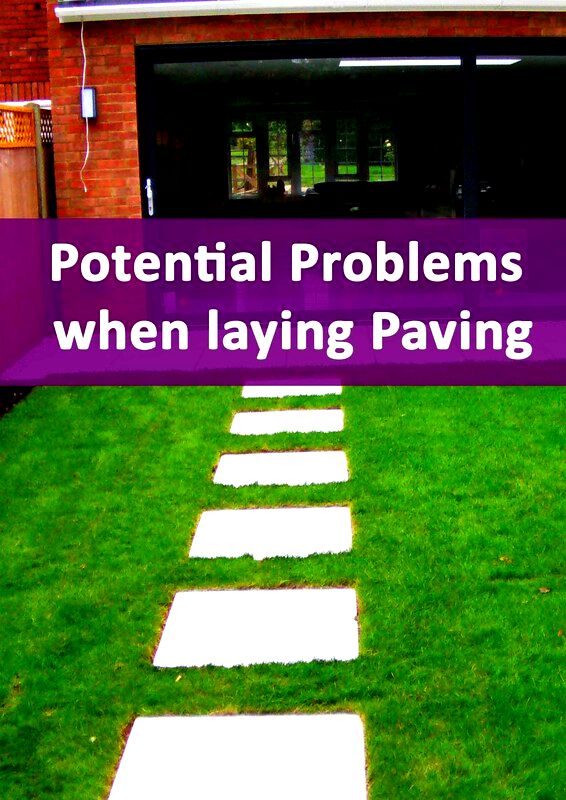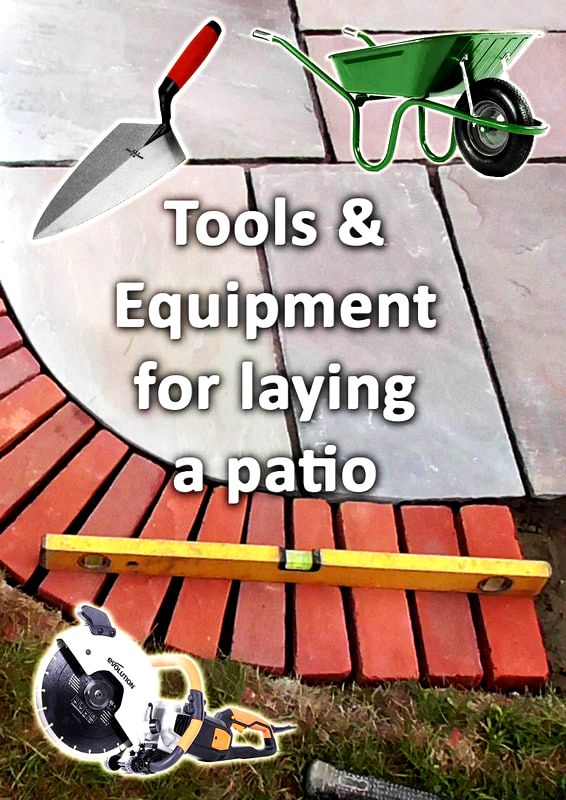|
This article contains affiliate links
Stepping stones can be a great way to create a defined journey through a garden space. This is especially so if your garden soil and lawn is subject to seasonally boggy conditions.
Most of the time garden lawns are the most prominent candidate for new stepping stones. These can help to alleviate compaction and reduce grass turning into mud. Stepping stones can also have a primary design function within a gardens aesthetic. They can visually integrate different surfaces as well as creating striking juxtapositions and contrast. This can be seen below in one of our landscaping projects where porcelain pavers where laid within a lawn. Here I will answer common stepping stone questions as well as how to lay stepping stones within correctly. Can you put stepping stones straight on to grass?
In theory you can simply just place stepping stones straight on top of grass. However, this really is far from an ideal solution! Eventually your paving will shift and slide upon the soft topsoil surface. This will lead to inconsistent spaces and varying levels. Over time, your stepping stones will start to rock and sink into the soft soil below. Eventually grass will start to grow over the top of the slabs making them completely submerged. What do you put under stepping stones?
Really the best thing to put under stepping stones is the same sub-base you would put under a patio. This means at least 80mm of compactable hardcore such as Mot type1 and 30mm of mortar. Such a base may seem like over engineering for stepping stones however this will prevent eventual movement. This is even more crucial if your stepping stones are a garden design feature like the example above. The human eye is incredibly sensitive when it comes to perspectives and alignments. Stepping stones moving over time will stick out like a sore thumb and ruin your effect. Do you need mortar with cement to lay stepping stones?
In an ideal world you will lay stepping stones onto a consistent bed of cement, based, mortar. This will provide a solid base which will be firmly bonded to the paver. Such a base will prevent any movement or change in level over time. Laying stepping stones upon compacted sand is better than soil but will still eventually subside and displace. What is the best distance between stepping stones?
There is no one optimal distance for between individual stepping stones. This is because there are two main variables; differences in peoples stride length and the varying widths of paving slabs. It is more common for the distance between stepping stones to be less than the width of paving. The best way to work out the best stepping stone distance is to set out your paving. Experiment walking up and down the stepping stones until you discover a distance which works for you. The average human stride is around 700mm. This means you want the centres of your stepping stones to be around this distance. Expecting to perfectly step seamlessly between stepping stones on every journey is however, a little unrealistic. How to lay stepping stones step by step
Step 1.
Set up a tight string line along the path you want the stepping stones to travel. Make sure you realise the perfect, consistent level for your stepping stones. Set up the string line so it bridges destination levels seamlessly. For example, from the base of a summer house to a patio at the rear of the home.
Step 2.
Using your paving slabs, set out your stepping stone frequency so it is comfortable to walk upon.
Step 3.
Tweek the distances to accommodate a good fit at each end of the stepping stone run.
Step 4.
Cut a piece of wood to the exact measurement you require between each paving slab.
Step 5.
Using a line spray mark out around each paving slab where it is to be laid.
Step 6.
Excavate out each stepping stone area to a depth of 140mm from the finished height and dispose of the soil.
Step 7.
Fill each excavated pit with 80mm of compactable hardcore, sub-base and compact well.
Step 8.
Mix up a 1:5 cement sharp sand mortar mix until it have the consistency of a thick brick laying mortar.
Step 9.
Make sure your string line is tight and start to gently bed down your stepping stones to the line. Use your timber distance gauge to also bed down your stepping stones at the correct frequency.
Step 10.
Take time to make sure your stepping stones are perfectly in line, square and at the correct distance. You will be very pleased with the completed result!
Step 11.
Cut off any excess mortar from around the edges of the paving with a pointing trowel and finish it neatly.
Thank you for reading our article on how to lay stepping stones on lawn. If you require stepping stone, paving or landscaping services do not hesitate to contact us.
We cover most of Buckinghamshire with our typical areas of operation including; Amersham, Aylesbury, Bovingdon, Chalfont, Chesham, Hyde Heath, Great Missenden, Princes Risborough, High Wycombe, Penn, Beaconsfield, Tring, Gerrard's Cross and Denham.
'As an Amazon Associate I earn from qualifying purchases'
0 Comments
Leave a Reply. |
The Author
|
Landscaping services across Buckinghamshire, Amersham, Aylesbury & High Wycombe
Hyde Heath, Amersham, Buckinghamshire |
|

